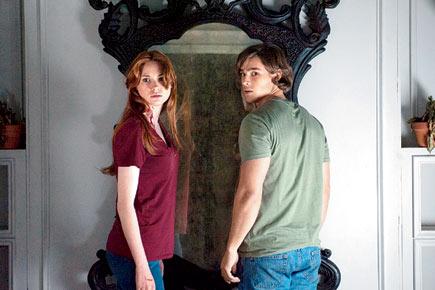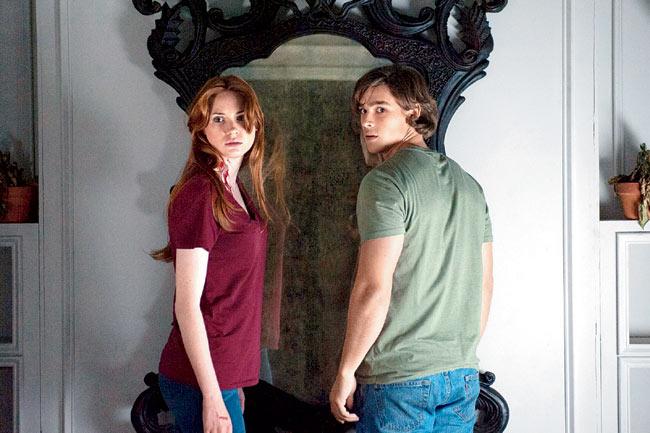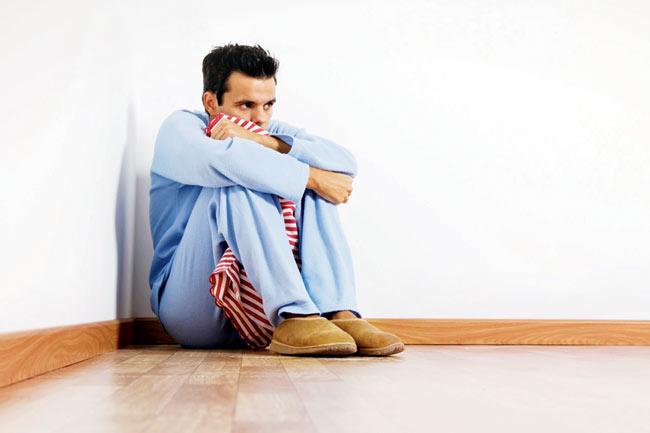From haunted mirrors to cellphone loss, or getting married, a person can be inordinately afraid of just about anything and avoid it completely. the guide explains the phenomenon of phobias, the triggers and how to deal with it. Plus, we look into what’s affecting celebrities, too

Oculus
Phobias come in many forms, and while it may revolve around something totally innocuous, it can severely affect the behaviour of a person. Often, the object arousing morbid fear can be something as unobtrusive as a mirror that reflects one’s image, which was the focus of the recently released horror film, 'Oculus'.

A still from the film Oculus
ADVERTISEMENT
Figure the phobia
Clinical Psychologist and Behaviour Consultant Hvovi Bhagwagar defines phobia as an unreasonable fear of something that poses little or no danger to the person experiencing it, resulting in total avoidance. “It is one of the most common mental disorders. It has two categories: Specific phobia (specific object/situations such as fear of heights) and Social Phobia (fear of humiliation leading to avoidance of public situations),” she elaborates.
Bhagwagar differentiates phobia from fear: “Fear is a normal and helpful reaction to actual danger or anxiety. In phobia, there is apprehension and over-reaction leading to complete avoidance of the event/object.”
Dr Amit Kulkarni, Consultant Psychiatrist, Asha Parekh BCJ Hospital, describes phobias as an expression of unconscious fear which gets attached to any situation or object. “In life today, we are facing new objects and previously unseen situations. Anything and everything could become an object of phobia, be it the Internet, or even gadgets,” he shares. He states that such people may be aware that they are reacting excessively but are helpless to do anything about it. The conflicting emotions may even cause depression, alcohol abuse, substance abuse, etc.
Fight or flight?
Phobias are driven by the “fight or flight” response, which exists in the most primitive part of our brain, according to Clinical Psychologist and Psychotherapist Susan Walker. “Phobias can also be triggered by thought patterns,” she divulges.
Once triggered, huge amounts of adrenalin are released into the system to prepare the body to fight or run away. “If the adrenalin is not metabolised by physical action, it builds up and results in the symptoms that we recognise as anxiety. Sometimes, a panic attack, which can almost feel like a heart attack, is experienced,” explains Walker.
Bhagwagar explains that heredity and brain chemistry combined with life experiences could cause phobia. “Specific phobias can be traced back to a specific triggering event, say a traumatic experience at an early age. Social phobias and Agoraphobia (fear of open spaces where help may not be easily available) have more complex causes that are not known entirely.”

New and the amusing
Dr Anjali Chhabria, Psychiatrist, Mind Temple Counselling Centre, explains that modern lifestyle can also lead to certain phobias: “Nomophobia is one of the newer phobias which is a fear of not having your cell phone. Gamophobia is another growing phobia, which is a fear of marriage. The increasing divorce and separation numbers along with growing importance given to independence is making people fear the institution of marriage.” She recounts instances of treating Somniphobia (fear of sleep), Neophobia (fear of new things) and Ataxophobia (fear of disorder).
Bhagwagar admits that in her practice, she has come across Nomophobia quite often. Other rare phobias that she has treated include Entomophobia (phobia of mosquitoes). She cities Social Phobia as one of the most common (she sees a patient a day) and some of the other common phobias she has treated include fear of flying (she sees almost two such cases a week), Claustrophobia (fear of confined spaces or of being trapped) and Acrophobia (fear
of heights).
Walker notes an increase in the number of cases of health phobias, where the slightest symptom can give rise to panic attacks and an endless round of doctor visits and tests. “Eating disorders such as anorexia have a phobic component where the patient associates food and weight gain with anxiety and can become phobic around food,” she emphasises.
Cope, tackle and train
Bhagwagar explains that in phobia, a person overestimates the extent of harm and underestimates their coping skills. “High levels of anxiety causes havoc in the brain chemicals and puts the sympathetic nervous system (our alarm centre) on high alert. This makes the object of the phobia seem much more threatening than it actually is.”
Systematic desensitization or a gradual exposure to the feared situation is a treatment that makes the person imagine threatening situations and is coupled with relaxation techniques. Later, they can be asked to approach the object/situation but at a less threatening level, rather than avoid it.
Dr Chhabria also cites modelling, a technique where the individual observes others’ reactions to the phobic stimuli as well as medication such as anti-depressants, tranquilisers and beta blockers. For more severe cases, there are procedures such as Deep Brain Stimulation (DBS), or Transcranial Magnetic Stimulation (TMS) as well.
Dr Kulkarni suggests that psychoanalytic therapy may also help to understand the deep-rooted fear-causing phobia. “Usually, phobia is an anxiety situation but, at times, it can be an expression of psychotic fear. It could be just the tip of the iceberg and the real disturbance may be tremendous and the person may actually be delusional. It is almost impossible for a lay person to distinguish between the two. So, it is best to seek professional help.”
Phobias and the celeb

Singer Cheryl Cole
> Cotton wool
(Bambakomallophobia)
Actress Vidya Balan
> Cats (Ailurophobia)
Actor Ranbir Kapoor
> Water
(Aquaphobia)
Actress Deepika Padukone
> Snakes
(Ophidiophobia)
Actor Johnny Depp
> Clowns (Coulrophobia)
Actor Johnny Depp
> Clowns (Coulrophobia)
Actress Pamela Anderson
> Mirrors
(Spectrophobia)
Scarlett Johansson
> Birds
(Ornithophobia)
Weird and weirder
Anatidaephobia - Fear that a duck is watching you.
Cherophobia - Fear of being too happy because something bad might happen.
Philophobia - Fear of falling in love.
Didaskaleinophobia - Fear of going to school.
Linonophobia - Fear of string.
Xanthophobia - Fear of the colour yellow.
Triskaidekaphobia - Fear of the number 13.
Watch out for these signs
Anxiety
Breathlessness
Chest pain or discomfort
Nausea
Loss of appetite
Fear of losing
Control or dying
Numbness or tingling sensation
(Info courtesy/ Dr Anjali Chhabria)
High levels of anxiety causes havoc in the brain chemicals and puts the sympathetic nervous system (our alarm centre) on high alert. This makes the object of the phobia seem much more threatening than it actually is.
— Hvovi Bhagwagar, Clinical Psychologist
 Subscribe today by clicking the link and stay updated with the latest news!" Click here!
Subscribe today by clicking the link and stay updated with the latest news!" Click here!







